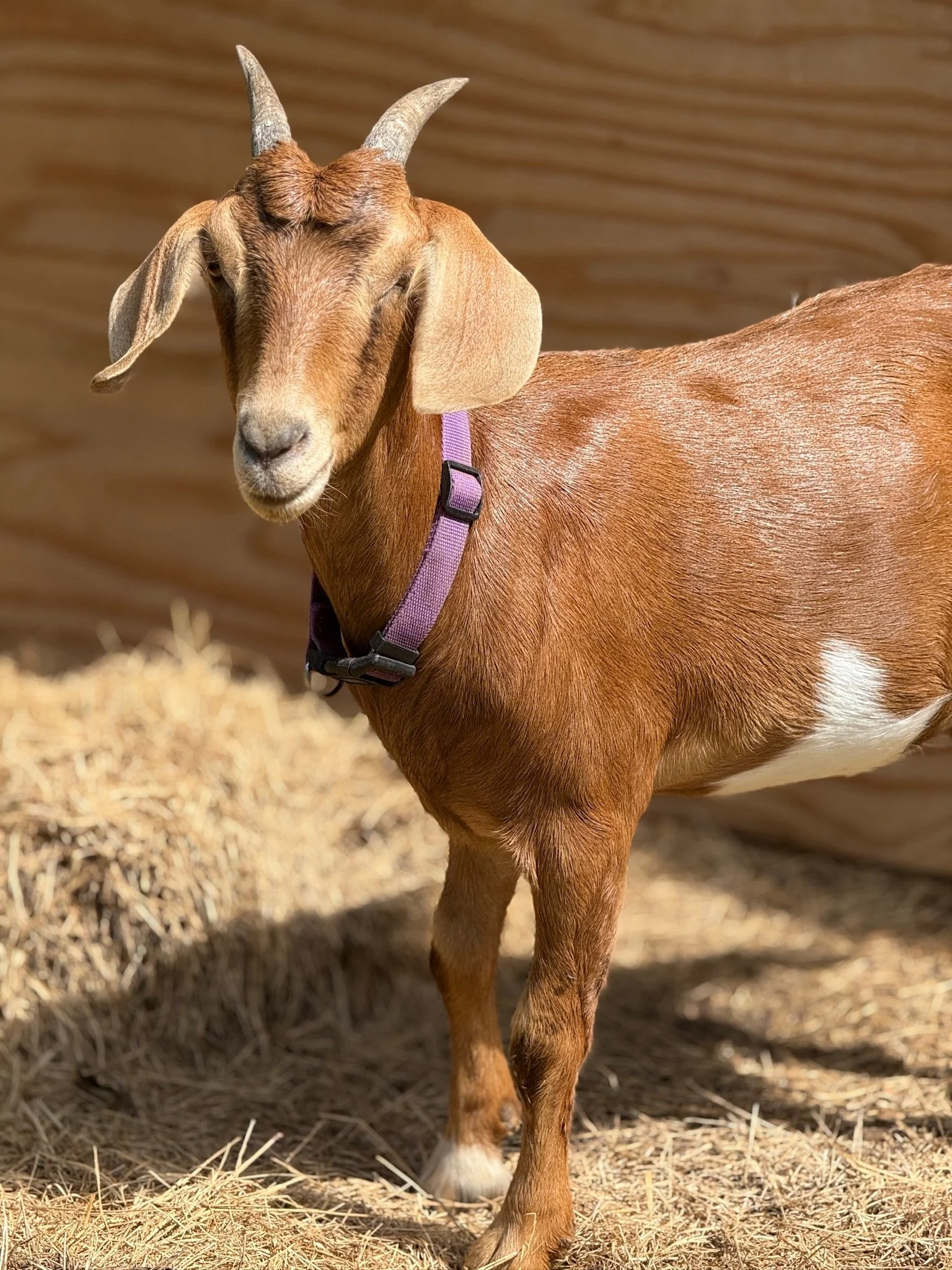Domestic Goat
Scientific Name: Capra aegagrus hircus
Habitat: adaptable to any habitat, love grass and shrubs, must be fenced in
Diet: Herbivore - grasses and hay, browse, weeds, grain
Weight: 20-300 lbs
Conservation Status: Domesticated
Range: global, all continents except Antarctica
Lifespan: 10 to 15 Years
Size: 16-42 in. at shoulders
The goats at the sanctuary have thin, stiff coats of hair that cover their entire bodies, including the nose. However, goats can have a variety of hair textures, from curly, straight, wavy, short, and long. They may have beards or wattles under their chins as well. Their fur can range in colors from light brown, dark brown, black, white, and grey, with various patterns like dots or stripes. They have short tails, hooves, small horns that point backwards, a black nose, large oval-shaped ears, and a wide variety of colors for eyes, but mostly yellow and brown. The pupils in their eyes are a horizontal rectangular shape. Goats also do a lot of their exploring at night because it is believed that they have excellent night vision.
Goats are naturally curious animals that love to climb and jump on various structures, even trees. Goats can eat almost anything because of their jaws. The upper jaw is wider than the lower jaw, which in turn ends up sharpening the molars over time, making their teeth more powerful for different materials.
Goats are seasonal breeders, and their months of breeding vary based on the region they live in. Because the length of pregnancy is only 5 months, females often have multiple litters in a year. Litters can range in size from one to 3 kids per litter. Female goats produce goat's milk, which has many uses, including for food products, skincare products, and other health products.








